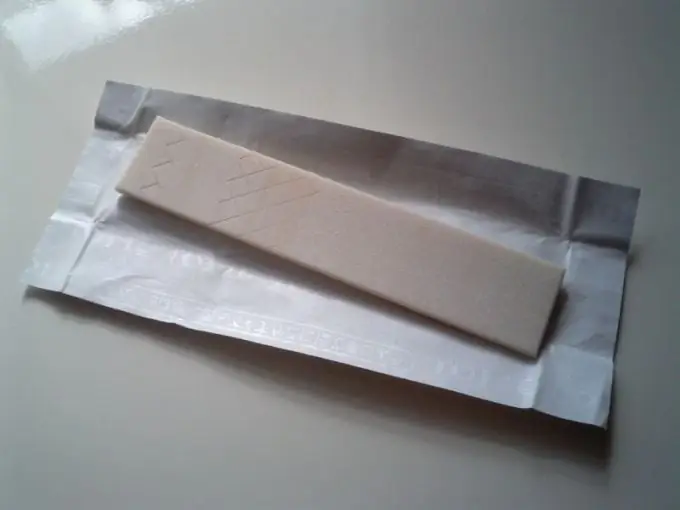Chewing gum (chewing gum) is an inedible soft base and a complex of flavored additives. The longer the gum is chewed, the less flavor it will have. Chewing gum in its usual form appeared at the end of the 19th century, but many hundreds of years before this event, people from different countries of the world used their special chewing gum.

Instructions
Step 1
The ancient Greeks eliminated food debris and freshened the breath after eating with mastic tree resin or beeswax. The Maya Indians used rubber for the same purposes, which they obtained by allowing the Hevea juice to solidify. North American Indians made their own chewing gum. They boiled off parts of conifers over a fire and then collected the resin. In Siberia, the “ancestor” of modern chewing gums was called tar. With its help, they not only cleaned the oral cavity, but also strengthened the gums, and treated a number of diseases. In India, chewing gum, which was also an aphrodisiac, was made from lime, betel leaves and areca palm seeds.
Step 2
Europe became "chewing" in the 16th century. The sailors brought chewing tobacco from the West Indies. The demand for it was enormous. For three centuries, it was chewing tobacco that remained the most popular chewing gum in the world.
Step 3
In 1848, a resident of England, John Curtis, began adding beeswax to pieces of resin, wrapping them in paper and selling them as chewing gum. After a while, he opened a small factory. Each of the four cauldrons boiled gum with their own flavor, such as licorice or cream and sugar. Alas, Curtis's chewing gum deteriorated equally quickly from the cold and from the heat.
Step 4
By the 60s of the 19th century, Curtis was forced to curtail production. The reason was not only the civil war, but also not the unpopularity of his chewing gum. Firstly, they were sold only in one state of America, secondly, they looked unattractive, and thirdly, they repelled the public with impurities in the form of pieces of dirt or pine needles.
Step 5
In 1869, American Thomas Adams invents something that resembles modern chewing gum. Experts still cannot agree on how this happened. According to one version, a certain Lopez de Santa Ana had the habit of chewing chicle - I can of the sapodil tree. His translator Thomas Adams tried it too, and realizing what he liked, he and his son began selling chicle to New Yorkers. According to the second version, Adams bought a ton of rubber, intending to produce shoes and toys, but the idea had to be abandoned, and the rubber remained. And then the American boiled rubber, divided it into small portions and began to sell it as a gum under the name Adams New York No. 1. New Yorkers liked the novelty, which had absolutely no taste.
Step 6
In 1884, Adams launched the Black Jack chewing gum. It looks like a regular pencil and tastes like licorice. Black Jack chewing gum was sold until the 1970s, and then it was discontinued. In 1986, its improved version reappeared on the shelves.
Step 7
The first fruit-based chewing gum, Tutti Frutti, is also produced at the Thomas Adams factory. The demand for it is so huge that vending machines with this type of gum are even installed in the New York subway.
Step 8
The classic chewing gum was invented by William Wrigley. Together with his father, he was engaged in the production of soap and noticed that the products are in demand due to a free bonus: Lotta or Vassar chewing gums were applied to each bar of Wrigley's soap. And then William decides to reorient production, and soon he buys out a patent for a chewing gum with sugar and flavors from a certain John Colgan, which retains its taste for a long time. Soon the world was introduced to the mint gum Wrigley`s Spearmint, which is well known today. In the late 1890s, William Wrigley produces Wrigley's Juicy Fruit. In 1914, Wrigley's Doublemint records appeared in America and Canada.
Step 9
The perfect chewing gum formulation that is still in use today was introduced in 1928. 24-year-old accountant Walter Deamer conducted dozens of experiments and found that elastic and tasty chewing gum is made from 20 percent rubber (now synthetic polymers), 60% sugar or substitutes, 19% corn syrup and 1% flavorings. Dimer's chewing gum was pink in color and allowed to inflate bubbles.







